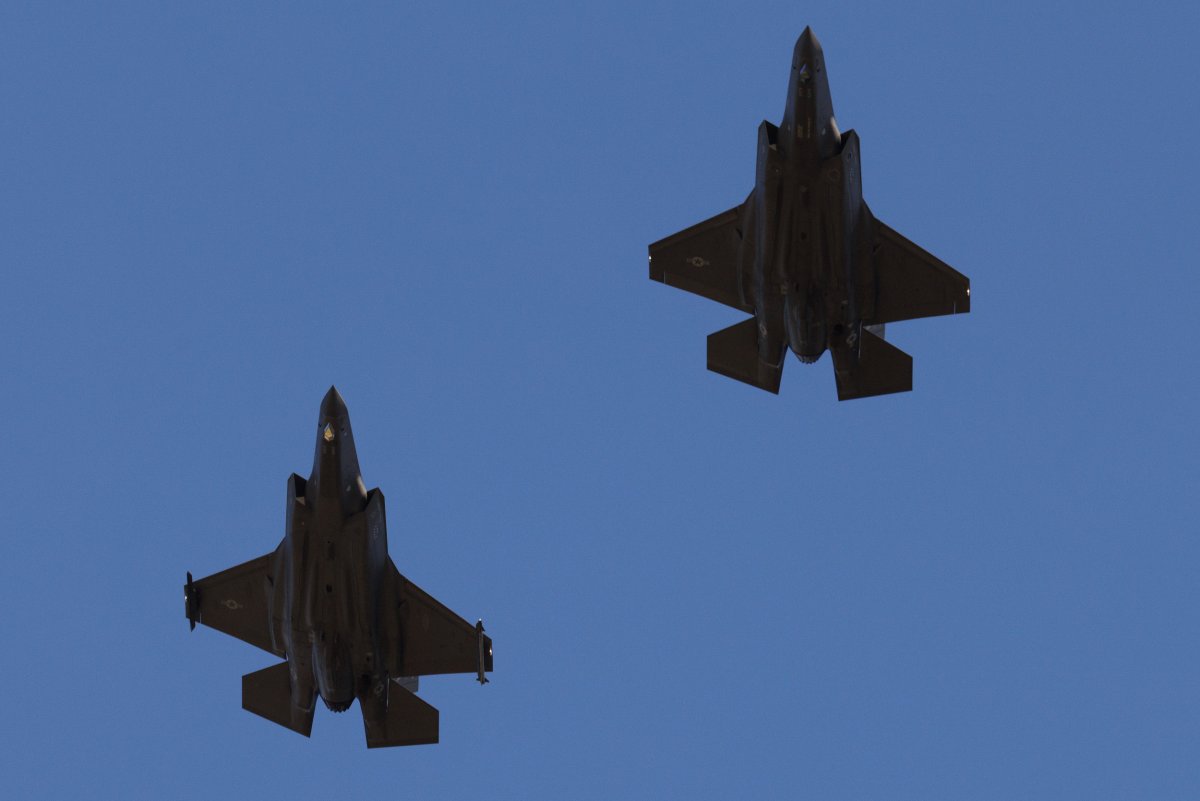Russia said it would pose an “immediate danger” to Moscow if Estonia, a neighboring country that is a member of the North American Treaty Organization (NATO), hosts nuclear-capable jets.
Kremlin spokesman Dmitry Peskov gave the reaction to Russian state media after Estonia’s defense minister Hanno Pevkur said his Baltic country was ready to host nuclear-capable F-35s again, as it had done before.
“The F-35s have already been in Estonia and will soon return again in rotation. We are ready to continue to host allies on our territory, including those who use such platforms,” Pevkur told Estonian radio on Friday.
According to Tass, Peskov noted that Baltic state leaders have expressed many absurd ideas. “One can only express regret in this regard,” he said.
Why It Matters
NATO-Russia tensions are at their highest in years over the Ukraine crisis. Russia launched its full-scale invasion of the Eastern European country in February 2022, and NATO allies fear Moscow has more ambitions in the former Soviet sphere, especially the Baltic states.
The alliance maintains a policy of nuclear deterrence, relying on a combination of U.S., British, and French nuclear capabilities. Its strategy includes forward-deployed, U.S.-owned nuclear weapons stored in Europe and delivery by allied aircraft such as the F-35A.
This posture is intended as a deterrent against potential aggression from Russia and as reassurance to NATO members closest to Russia.
U.K. Will Buy F-35A Jets
Pevkur’s comments come as the United Kingdom, another NATO ally, said it would purchase at least 12 nuclear-capable F-35A fighter jets made by the U.S.
British Prime Minister Sir Keir Starmer said his country “will make these aircraft able to bear nuclear weapons if necessary” and that the purchase was in “response to a growing nuclear threat”.
The F-35A Lightning II, developed by Lockheed Martin, is a fifth-generation stealth jet that the U.S. Air Force describes as the “world’s most advanced multi-role fighter.”
It is compatible with carrying the B61-12 nuclear gravity bomb, making it a key component in NATO’s nuclear sharing arrangements.
The jet’s advanced avionics, stealth features, and precision strike capability enable it to deliver nuclear payloads with high survivability and accuracy. The model is designed for both conventional and strategic missions, providing flexibility to NATO forces.

Two US Air Force fifth generation F-35A Lightning II stealth aircrafts comes into land at RAF Lakenheath on April 17 in Lakenheath, England.
Two US Air Force fifth generation F-35A Lightning II stealth aircrafts comes into land at RAF Lakenheath on April 17 in Lakenheath, England.
Dan Kitwood/Getty Images
NATO Allies Agree to Raise Spending
NATO allies have also agreed to increase their spending target to 5 percent of GDP—inclusive of 3.5 percent on defense and 1.5 percent on key infrastructure—in response to a push by the Trump administration.
The increase was agreed at the recent NATO leaders’ summit in the Netherlands, though it is nonbinding. Trump had previously mooted withdrawing the U.S. unless all allies met the target, though his administration has affirmed its commitment to NATO.
Higher spending is seen as needed to broaden the burden-sharing across the alliance and lessen its dependence on the U.S. Moreover, the increased spending is a response to heightened threats posed by Russia and China.
But it means a steep budget hike for NATO’s European members and Canada that will cost them tens of billions of dollars.
It’s a major revamp of the way NATO calculates defense spending. Until now, the allies had set a target of 2 percent of GDP for their defense budgets. Now they’ll be aiming for 3.5 percent by 2035.
They’ll now be able to include weapons and ammunition they supply to Ukraine in the equation, making the new target slightly easier to reach, but still difficult for Canada and a number of European countries with economic troubles.
On top of that, the allies will dedicate 1.5 percent of their GDP to upgrading infrastructure—roads, bridges, ports and airfields—needed to deploy armies to the front. Money spent on protecting networks or preparing societies for future conflict can be included.
Progress will be reviewed in 2029, after the next U.S. presidential election.
However, Spain refused the agreement while Slovakia had reservations. Belgium, France and Italy will struggle to meet the new target, NPR reported.
This article includes reporting by The Associated Press.
